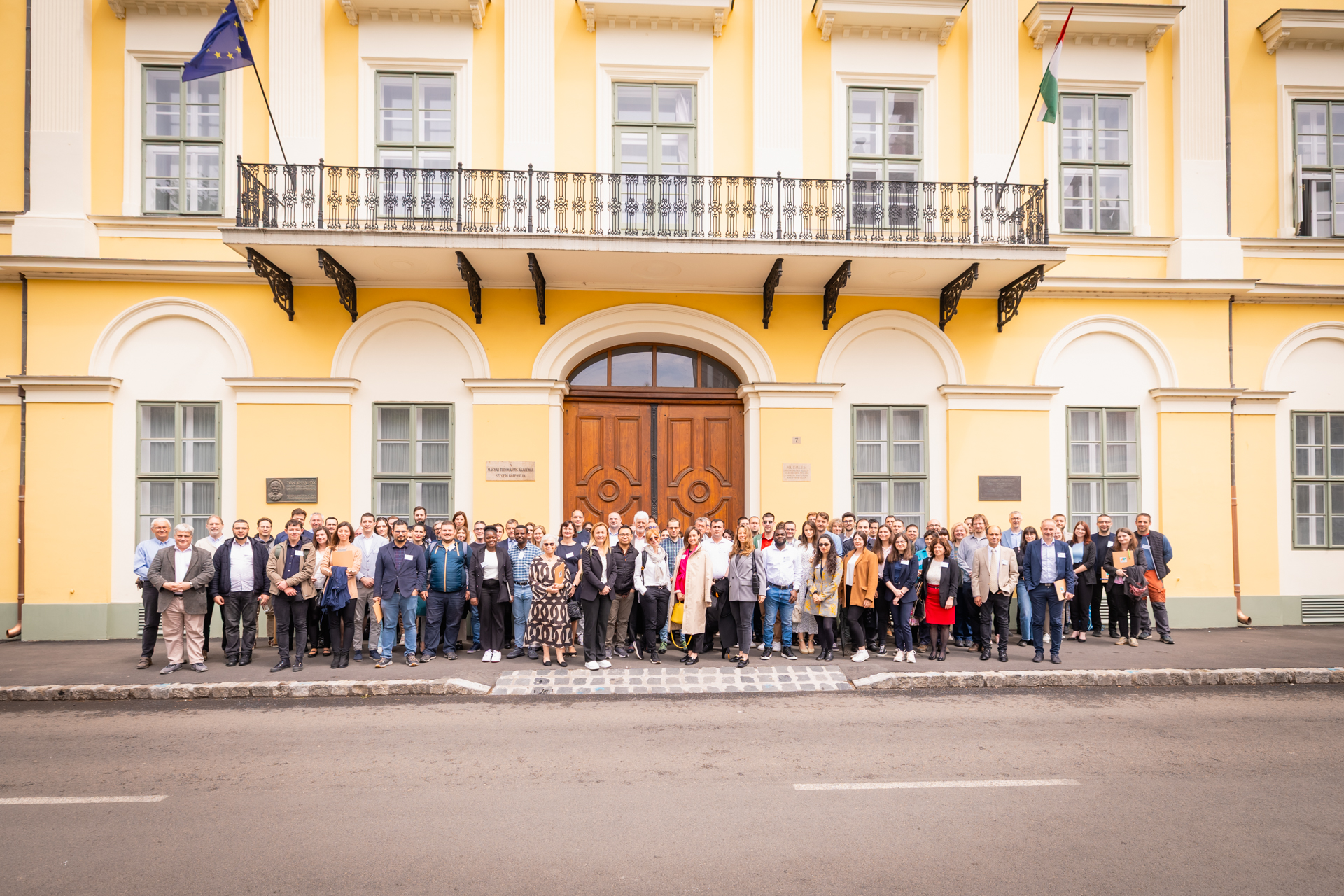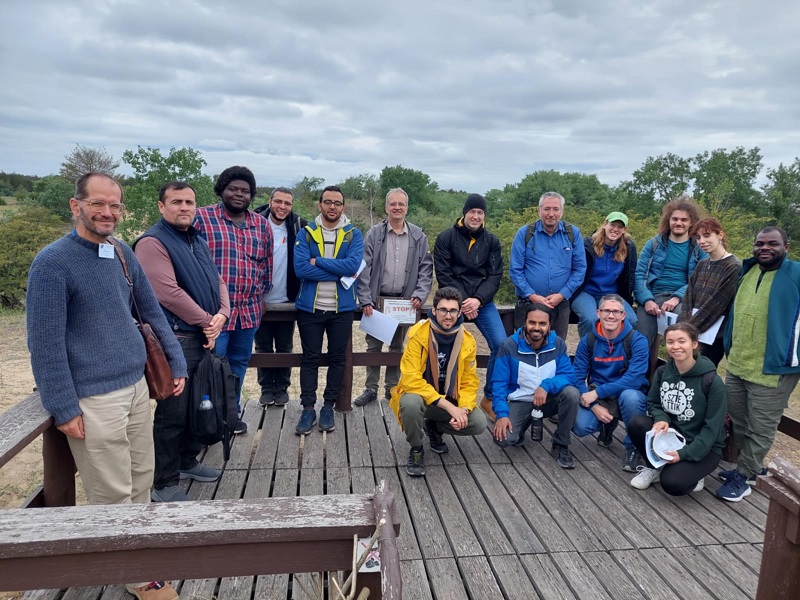
As climate change intensifies, certain natural disasters are expected to become more frequent, posing serious risks to both human health and life. Should we anticipate more of these extreme events in the years ahead? Can we predict when and where they will occur? And most importantly, can society prepare for them on a large scale? These were the central questions explored at the 2nd Natural Hazards and Climate Change Conference, held at the University of Szeged. The scientific gathering brought together around 150 experts from four continents.
For three days, Szeged served as an international hub for research on natural hazards and climate change. From May 21 to 23, 2025, the Institute of Geosciences at the University of Szeged’s Faculty of Science and Informatics hosted the 2nd Natural Hazards and Climate Change Conference. The event was supported by Hungary’s National Research, Development and Innovation Office (NKFIH) through its Mecenatúra grant program.
The international conference addressed a wide range of issues – including droughts, floods, earthquakes, and invasive plant species – with particular attention given to public health. Phenomena such as the spread of infectious diseases and the rising frequency of heatwaves, along with the resulting heat stress, are increasingly recognized as natural hazards that endanger human populations, with climate change exacerbating their effects. Motivated by these concerns, the conference included both a dedicated session and a specialized workshop on how the spatial perspective and research tools of geography and the geosciences can support public health.
The conference opened with remarks by Prof. Dr. Dezső Horváth, Dean of the Faculty of Science and Informatics at the University of Szeged; Prof. Dr. Edit Paulik, Head of the Department of Public Health at the Albert Szent-Györgyi Medical School; and Dr. György Sipos, Head of the Department of Physical and Environmental Geography.

Reflecting the event’s international reach, over 150 participants from four continents convened in Szeged for the conference. The longest journey was undertaken by a researcher from Tajikistan in Central Asia, while many other attendees from Asia, Africa, and South America were primarily based in Europe – several of whom are Stipendium Hungaricum scholarship recipients. The majority of European participants hailed from Central and Eastern Europe, including Serbia, Croatia, Slovenia, Austria, Slovakia, Poland, and Ukraine. Delegates also came from Western Europe, notably Germany and Spain.

Among the conference’s plenary lectures was a presentation by Dr. Anna Páldy, an expert at Hungary’s National Public Health and Pharmaceutical Center, who addressed the public health impacts of heatwaves.
Photo: Ádám Kovács-Jerney
According to Dr. György Sipos, Head of the Department of Physical and Environmental Geography at the University of Szeged and the conference’s chief organizer, this year’s event – much like the one held two years ago – placed strong emphasis on hydrology-related natural hazards, particularly droughts and floods. Several sessions were dedicated to this theme, bringing together not only the University’s expertise but also contributions from neighboring countries in the areas of monitoring, modeling, and forecasting. These discussions aimed to foster coordinated action and develop scientific responses in the fields of water science and water management.
As Dr. Sipos explained, researchers from Szeged delivered presentations on the satellite-based analysis of soil moisture and water scarcity, as well as on land use and land cover change, highlighting both geographical and biological aspects. These contributions aligned well with methodologies developed and presented by international research groups, pointing to the potential for long-term collaboration.
Dr. Sipos also highlighted the growing attention to the public health dimension of climate change, noting that several presentations explored topics such as climate anxiety, the connections between migration and disease, the impacts of heatwaves, and strategies for addressing these complex challenges. The program also covered a wide range of additional concerns – including meteorological phenomena, challenges in agri-environmental management, and broader environmental sustainability issues – further expanding the conference’s interdisciplinary scope.

A number of participants emphasized that one of the conference’s greatest strengths was its ability to promote meaningful communication and collaboration across disciplinary boundaries. To encourage this, the organizers deliberately structured each session to include presentations that examined a common theme – such as drought – from diverse perspectives, including geographical, ecological, and public health viewpoints. According to Professor Edit Paulik, co-organizer of the event, this approach helped lay the foundation for several promising interdisciplinary partnerships and future joint projects.
Building on the conference’s interdisciplinary momentum, the second day featured a series of thematic workshops on hydrological modeling, public health, artificial intelligence applications, and micro- and nanoplastics. Designed to actively engage participants, these sessions aimed to explore current research trends and identify new opportunities for collaboration. The workshops also provided a platform for researchers from the University of Szeged to present several international projects – including PLAGROSYS and NOEMA, which investigate the environmental impact and distribution of nanoplastics, and ADAPTISA, which focuses on water management in the Tisza River and its catchment area. As Dr. István Szilágyi, principal investigator of the PLAGROSYS project, noted, these interdisciplinary research findings were effectively integrated into the conference program through presentations.

The event concluded with a full-day field excursion, offering participants an overview of the most pressing natural hazards impacting Hungary’s Southern Great Plain – from the severe drought affecting the sandy Homokhátság region, to the problems caused by invasive plant species, and the recurring floods along the Tisza River.

The conference brought renewed international scientific attention to the University of Szeged’s expertise in water science, and plans are already underway to organize the event again in 2027.

Project No. 149401 was implemented with the support of the Ministry of Culture and Innovation, through funding from the National Research, Development and Innovation Fund under the MEC_SZ_24 grant program.
Source: SZTEinfo
Photos: Ádám Kovács-Jerney

